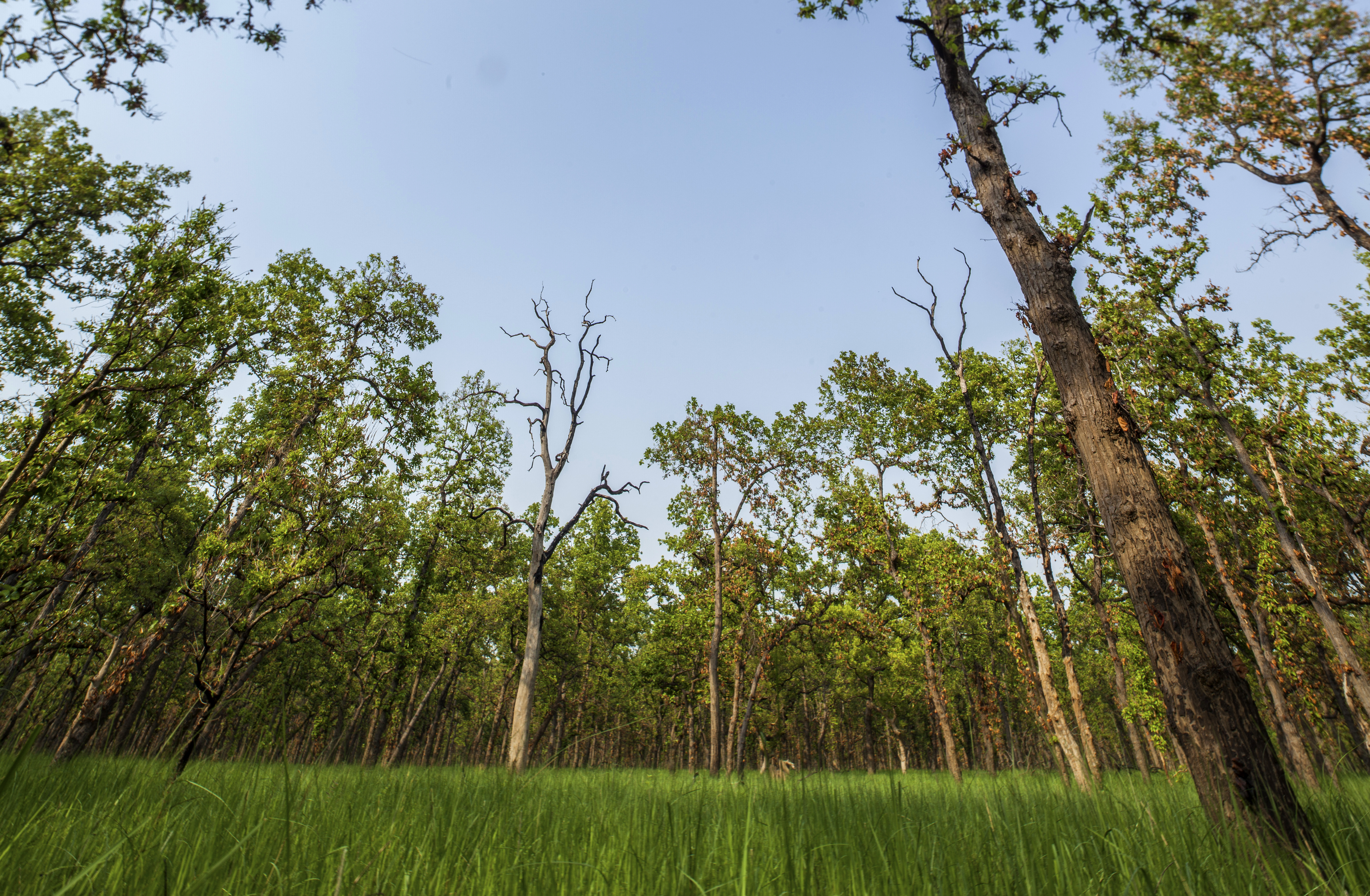The WWF is run at a local level by the following offices...
Nepal's REDD+ Readiness
Forests provide integral ecosystem services and are an essential part of life support systems. Although forests contribute to the well-being of humans via environmental, socio-cultural and economic values, their importance is often inadequately recognised.

Carbon sequestration is one such prominent ecosystem service provided by forests; however, it has been debilitated by deforestation and forest degradation. It is estimated that 32.3 million tonnes of carbon dioxide equivalent (CO2e) was emitted from the forest in the Tarai Arc Landscape between 2004 and 2014. As a sustainable solution to reduce carbon emission and improve forests’ carbon stock, REDD+ Readiness Package is being developed by the government with the assistance of WWF-Nepal.
Under the Ministry of Forests and Soil Conservation, the REDD Implementation Centre has developed an Emission Reduction Programme Idea Note (ER-PIN)—a guiding document to prepare an emission reduction programme for 12 districts in the Tarai Arc Landscape. The ER-PIN was submitted to the Forest Carbon Partnership Facility (FCPF) in March 2014. The FCPF is a global partnership of governments, corporates, civil society, and indigenous people focused on reducing carbon dioxide emissions and the sustainable management of forest carbon stock in developing countries.
Following the FCPF’s decision, Nepal received support to include the ER-PIN in the Carbon Fund pipeline and further develop the ER-PIN process to form the Emission Reduction Program Document (ER-PD). The ER-PD is a document based on which funding is allocated to certain countries. As identified by the proposed ER-PD, illegal harvesting of forest products, overgrazing, forest fires, encroachment, resettlement, and infrastructure development are six major drivers of deforestation and forest degradation.
Drivers of deforestation
Population growth and in-migration into Nepal’s lowlands have accelerated demands for timber and fuel wood. It is estimated that the supply is only able to meet 70 percent of timber demand and 50 percent of fuel wood demand in the Tarai Arc Landscape (2011). Based on per capita estimates, the proposed ER-PD estimates a total demand of 0.8 million cubic meters of timber and 2.9 million tons of fuel wood in the 12 districts of the Tarai Arc Landscape.
Overgrazing and unmanaged grazing destroys understories and heavily contributes to forest degradation. It is estimated that over 4 million livestock freely graze in this area. Due to restricted grazing in most community forests, there is additional pressure on government managed forests.
Similarly, forest fires cause forest degradation, as frequent and uncontrolled fires damage vegetation and prevent the regeneration of seedlings and saplings. A majority of the forests are set on fire deliberately, with the aim to expand agricultural land, create grazing areas for livestock, and facilitate poaching.
Illegal conversion of forests to agricultural land and legal but poorly planned conversion of forest land for resettlement and infrastructure and development projects heavily contribute to deforestation.
A nationwide study suggests 66 percent of the forest area lost between 1964 and 1991 was due to its conversion to farmland. And it is estimated that about 14,000 hectares of forest land has been given to development projects in the last 25 years.
Solutions proposed
The proposed ER-PD highlights solutions to address these drivers of deforestation and forest degradation within the framework of the current Forest Policy (2015), the Forestry Sector Strategy (2016-2025) and the National REDD+ Strategy (2016) through community-based forest management, sustainable management of forests, alternative energy, private sector engagement and integrated land use planning.
Community-based forest management enhances ownership and accountability of local residents by increasing their rights over the resources. Sustainable management of forests is expected to increase production and supply of forest products to meet demand. As the majority of the people in this region are highly dependent on forests for energy, alternative energy sources and energy efficient technology can significantly reduce the demand for fuel wood. Engagement of the private sector is expected to enhance value chains of forest products and create new forest in degraded forests and private lands.
Improvement of law enforcement and natural resource governance are emphasised to control illegal and unsustainable harvest of forest products. Improved conservation in protected and critical biodiversity areas is proposed to enhance a sustainable flow of ecosystem services. Integrated land use planning is anticipated to reduce conversion of forests to agriculture and other land uses while advancing environment friendly development infrastructure.
The expected emission reduction target of the proposed ER-PD in its first 10 years is 37.3 million tonnes of carbon dioxide equivalent (CO2e). However, these benefits are expected to increase over time given the long-term nature of the planned interventions. The ER-PD proposes the carbon benefits to be shared between the government and the communities. The provisions in the ER-PD will not only enhance forest-carbon stock to mitigate the impacts of climate change, but also provide ample economic opportunities to communities through sustainable management of forests. Most importantly, once the ER-PD is accepted by the FCPF for the Carbon Fund, there will be a positive shift in Nepal’s forestry sector funding from a grant-based approach to a performance-based financing approach through carbon trade.
About the Author:
Ananta Bhandari works as the Program Manager-Forests in WWF Nepal.
21 March 2017